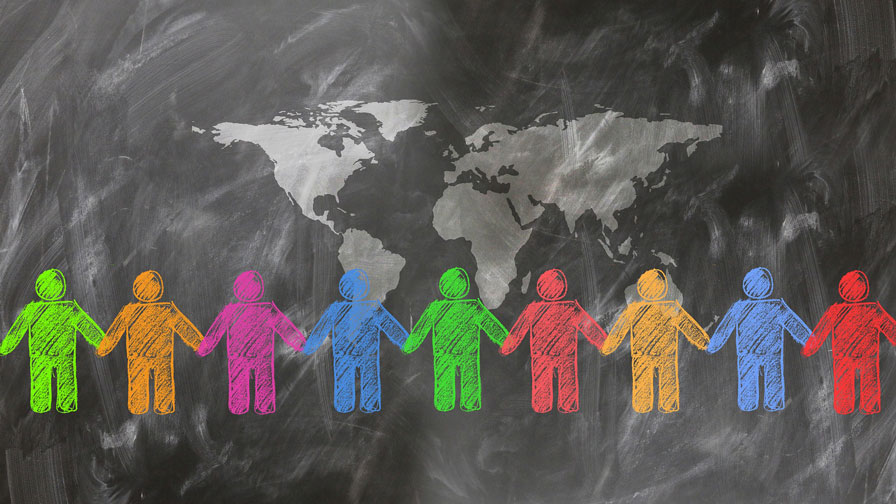In an increasingly interconnected global economy, where businesses transcend geographical boundaries, the strategic management of human capital has evolved into a complex yet critical discipline: Global Talent Management (GTM). No longer confined to domestic operations, organizations are actively seeking, developing, and retaining talent from every corner of the world, including emerging markets like Indonesia. This globalized approach to talent is driven by a myriad of factors, including the pursuit of specialized skills, cost efficiencies, market expansion opportunities, and the desire to build diverse and innovative teams.
GTM encompasses a holistic set of practices, policies, and systems designed to optimize an organization’s workforce on a worldwide scale, ensuring that the right people with the right skills are in the right roles at the right time, irrespective of their physical location. It’s about leveraging the full spectrum of global human potential to achieve strategic objectives. This article will delve into the profound importance of Global Talent Management in today’s business landscape, explore its core components and multifaceted benefits, detail the essential strategies that define effective GTM, address the significant challenges in its implementation, and envision its pivotal role in shaping the future of work and organizational success.
The Crucial Importance of Global Talent Management
The imperative for robust Global Talent Management stems from the fundamental shifts in the global economic and labor landscapes.
- Access to Diverse Skill Sets: GTM allows organizations to tap into a wider pool of talent, accessing specialized skills and knowledge that may be scarce in their domestic markets. This is particularly relevant for niche technological roles or industries requiring unique cultural insights.
- Driving Innovation and Creativity: Diverse teams, comprised of individuals from varied cultural backgrounds and experiences, are more likely to generate innovative ideas and creative solutions, fostering a dynamic environment. GTM facilitates the assembly of such teams.
- Market Expansion and Localization: To successfully expand into new international markets, organizations need local talent who understand the cultural nuances, regulatory environments, and consumer behaviors of those regions, making GTM crucial for effective localization strategies.
- Cost Efficiencies and Competitive Advantage: By strategically recruiting and deploying talent globally, companies can optimize labor costs while maintaining high-quality output, thereby gaining a significant competitive edge in the global marketplace.
- Enhanced Employer Brand and Attractiveness: Organizations with strong GTM practices are often perceived as more progressive and globally-minded, making them attractive employers for top talent seeking international career opportunities.
- Building a Resilient Workforce: A globally distributed workforce, managed effectively through GTM, can provide resilience against regional disruptions (e.g., economic downturns, natural disasters), ensuring business continuity.
- Knowledge Transfer and Best Practice Sharing: GTM facilitates the sharing of knowledge, best practices, and organizational culture across different geographies, leading to a more integrated and efficient global enterprise.
- Navigating Demographic Shifts: As populations age in some regions and grow in others, GTM helps organizations balance labor supply and demand, proactively addressing potential talent shortages or surpluses.
Core Components and Multifaceted Benefits of Global Talent Management

An effective Global Talent Management framework is comprehensive, integrating various HR functions to achieve a cohesive talent strategy.
Global Workforce Planning
- Strategic Forecasting: Involves anticipating future talent needs based on business objectives, market trends, and potential global expansion, ensuring a proactive approach to talent acquisition.
- Skills Gap Analysis: Identifying current and future skill deficits across the global organization and developing strategies to bridge these gaps through hiring, training, or redeployment.
Global Talent Acquisition and Recruitment
- Standardized Sourcing: Developing consistent global recruitment strategies while allowing for regional adaptation, leveraging international job boards, and professional networks.
- Cross-Border Mobility: Managing the complexities of international assignments, including visas, immigration, relocation, and cultural acclimatization programs for assignees and their families.
Global Performance Management
- Harmonized Systems: Implementing consistent performance appraisal systems and metrics across different countries, while allowing for cultural sensitivity in feedback delivery.
- Goal Alignment: Ensuring that individual and team goals across global entities are aligned with overall organizational objectives, promoting a unified strategic direction.
Global Learning and Development
- Universal Training Programs: Designing and delivering learning initiatives that are relevant and accessible to a diverse global workforce, often leveraging e-learning platforms and virtual classrooms.
- Leadership Development: Identifying and nurturing future leaders from various global regions, preparing them for roles with international responsibilities.
Global Compensation and Benefits
- Competitive Benchmarking: Researching and implementing competitive compensation and benefits packages that are equitable and locally relevant across different countries, considering cost of living and market rates.
- Compliance with Local Regulations: Ensuring full compliance with diverse local labor laws, tax regulations, and social security systems across all operating geographies.
Global Succession Planning
- Identifying High Potentials: Proactively identifying high-potential employees globally who can fill critical leadership and specialized roles in the future, creating a robust talent pipeline.
- Cross-Cultural Exposure: Providing opportunities for high-potential individuals to gain international experience through rotations or assignments, broadening their perspectives and capabilities.
Global Employee Engagement and Retention
- Culturally Sensitive Initiatives: Designing engagement programs that resonate with diverse cultural values and preferences, fostering a sense of belonging and motivation across the global workforce.
- Career Pathing: Offering clear and attractive career development paths that include international opportunities, encouraging long-term commitment from global talent.
Diversity, Equity, and Inclusion (DEI) at a Global Scale
- Inclusive Policies: Implementing policies that promote diversity, equity, and inclusion across all global operations, addressing potential biases in hiring, promotion, and development.
- Cultural Competence Training: Providing training to employees and leaders on cultural competence to facilitate effective cross-cultural collaboration and understanding.
Important Strategies Defining Effective Global Talent Management
Successful Global Talent Management requires a strategic and nuanced approach that accounts for global consistency and local relevance.
- Develop a Centralized GTM Strategy with Local Flexibility: Establish overarching global talent principles and policies, but empower local HR teams to adapt these to specific regional legal, cultural, and market conditions.
- Leverage Technology for Global Reach: Implement robust HR Information Systems (HRIS), Talent Management Systems (TMS), and Applicant Tracking Systems (ATS) that can manage global data, automate processes, and provide analytics across borders.
- Invest in Cross-Cultural Training and Development: Equip employees, especially those on international assignments or managing global teams, with the cultural intelligence and communication skills necessary to thrive in diverse environments.
- Foster a Strong Global Employer Brand: Consistently communicate the organization’s values, opportunities, and commitment to global talent through various channels, making it an attractive employer worldwide.
- Establish Clear Global Mobility Policies: Develop well-defined policies and support systems for international assignments, including clear roles, responsibilities, compensation, benefits, and repatriation strategies.
- Prioritize Data Analytics for Insights: Utilize HR data analytics to track global talent metrics, identify trends, measure the effectiveness of GTM initiatives, and inform strategic decision-making.
- Build a Culture of Continuous Learning: Encourage a growth mindset and provide ongoing learning opportunities that address both global skill needs and local development priorities.
- Promote Internal Talent Mobility: Create pathways for employees to move between different countries and business units, enriching their experience and strengthening global connectivity within the organization.
- Engage Local HR Expertise: Rely on and empower local HR professionals who possess deep knowledge of their respective regions’ labor laws, cultural norms, and talent markets.
- Ensure Ethical and Compliant Practices: Rigorously adhere to international labor laws, human rights standards, and ethical recruitment practices in every country of operation.
Challenges in Implementing Global Talent Management
Despite its importance, the execution of GTM is fraught with complexities that organizations must meticulously navigate.
- Navigating Diverse Legal and Regulatory Frameworks: Each country has its own labor laws, tax regulations, immigration policies, and data privacy laws (e.g., GDPR, local equivalents in Indonesia) which must be understood and complied with, adding layers of complexity to global HR operations.
- Cultural Differences and Communication Barriers: Varying communication styles, work ethics, values, and social norms across cultures can lead to misunderstandings, conflicts, and challenges in team cohesion and performance management.
- Compensation and Benefits Parity: Ensuring equitable yet competitive compensation and benefits across diverse economic landscapes, considering cost of living, local market rates, and currency fluctuations, is a significant challenge.
- Talent Attrition and Retention in Emerging Markets: Attracting and retaining top talent in highly competitive emerging markets, which may have different career expectations or loyalty patterns, can be difficult.
- Integration of Disparate HR Systems: Merging or integrating various local HR systems into a cohesive global platform can be technically challenging and costly, leading to data inconsistencies if not managed properly.
- Managing Repatriation Challenges: The process of bringing international assignees back to their home country can be complex, often involving career re-integration issues, cultural readjustment, and potential reverse culture shock.
- Lack of Global HR Capabilities: Many organizations lack HR professionals with the necessary global mindset, cross-cultural competence, and international HR expertise to effectively manage a global workforce.
- Ensuring Consistent Employee Experience: Delivering a consistent and positive employee experience across different countries, despite local variations in benefits, policies, and management styles, is a continuous effort.
- Political and Economic Instability: Geopolitical events, economic downturns, and policy changes in various countries can directly impact talent strategies, requiring constant monitoring and adaptability.
- Ethical Considerations in Global Data Handling: Managing employee data across borders requires careful attention to data sovereignty, privacy rights, and ethical data usage in different jurisdictions.
The Future of GTM as a Strategic Imperative

The trajectory of Global Talent Management indicates its increasing strategic importance, evolving to address future challenges and opportunities in the world of work.
- AI and Analytics for Predictive Talent Insights: Artificial intelligence and advanced analytics will play a much larger role in GTM, enabling predictive capabilities for workforce planning, identifying skill gaps, forecasting talent demand, and optimizing global talent allocation.
- Hyper-Personalized Employee Experiences: GTM will shift towards highly personalized employee experiences, leveraging data to tailor learning paths, career development, and even benefits to individual global employees, enhancing engagement and retention.
- Emphasis on Upskilling and Reskilling for Global Competencies: With rapid technological advancements, GTM will increasingly focus on continuous upskilling and reskilling initiatives to ensure the global workforce possesses future-proof competencies, including digital literacy and cross-cultural collaboration skills.
- Fluid Global Workforce Models (Gig, Remote, Hybrid): GTM will adapt to and manage more fluid workforce models, incorporating a blend of full-time employees, global contractors, gig workers, and remote teams, necessitating robust global compliance and engagement strategies.
- Strategic Focus on Diversity, Equity, Inclusion, and Belonging (DEIB): DEIB will become even more central to GTM, moving beyond compliance to genuinely foster inclusive cultures that leverage the full potential of a globally diverse workforce.
- Sustainable and Ethical Global HR Practices: GTM will integrate sustainability and ethical considerations more deeply, focusing on responsible recruitment, fair labor practices, and the well-being of employees across all global operations.
- Leveraging Extended Reality (XR) for Global Onboarding and Training: XR technologies (VR/AR) will provide immersive experiences for global onboarding, cultural training, and collaborative learning, bridging geographical distances more effectively.
- Increased Interdepartmental Collaboration: GTM will require even tighter collaboration between HR, legal, finance, IT, and business unit leaders to navigate the complexities of global operations seamlessly.
- Agile GTM Frameworks: Talent management strategies will become more agile and iterative, allowing organizations to quickly adapt to geopolitical changes, market shifts, and evolving talent trends.
- Localization of HR Tech with Global Integration: HR technology solutions will offer greater flexibility for local customization while maintaining global data integrity and reporting capabilities.
Conclusion
Global Talent Management is no longer a niche HR function but a strategic imperative for organizations aiming for sustained growth and competitive advantage in the 21st century. By systematically addressing the complexities of attracting, developing, and retaining talent across diverse geographies, companies can unlock unparalleled human potential.
From mitigating biases through rigorous processes to fostering a culture of continuous learning and embracing technological advancements, effective GTM builds a resilient, innovative, and engaged global workforce. While challenges related to cultural nuances, regulatory compliance, and technological integration persist, the commitment to robust GTM practices will ultimately define the leaders of tomorrow’s borderless economy. Cultivating a truly global talent pipeline is not just about finding the best individuals; it’s about building a harmonious, productive, and adaptable workforce that drives enduring success in a truly connected world.














